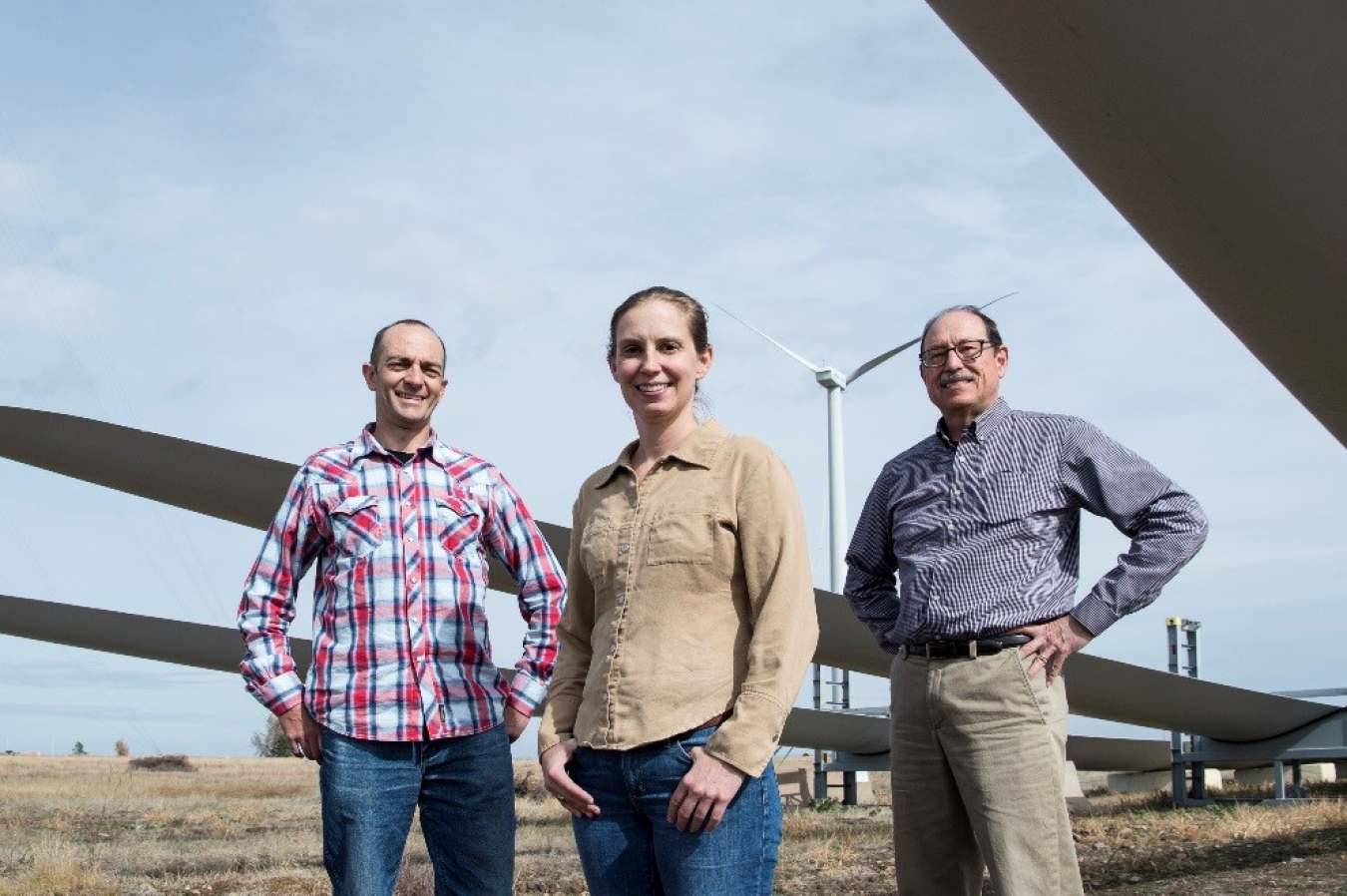This small-scale field research project paves the way for a more comprehensive wind plant field validation effort.
February 19, 2019
NREL engineers including Rick Damiani, Katherine Dykes, and Paul Veers developed WISDEM to make wind turbines and wind farms operate more efficiently. Their work was funded by DOE’s Wind Energy Technologies Office. Photo by Dennis Schroeder, NREL
The wind industry currently relies on proprietary manufacturer software to optimize energy production at wind plants. While this approach provides an excellent view of individual turbines it lacks a more holistic view of wind systems leaving plant developers and operators guessing which combinations of variables will maximize profits.
A deeper understanding of wind plant physics at the systems scale is now possible thanks to the Wind Plant Integrated Systems Design and Engineering Model, WISDEM®, a free software program developed by the National Renewable Energy Laboratory (NREL) through funding from the Energy Department’s Wind Energy Technologies Office (WETO).
WISDEM is the only toolset that includes both wind turbine and power plant design capabilities in a fully integrated software framework. Through the creation of a virtual, vertically integrated wind plant from components to operations, companies are able to incorporate specific modules into their proprietary software, develop on top of WISDEM’s source code, and license their own contributions.
Selected as a 2018 R&D 100 Award finalist by R&D Magazine, WISDEM is based on an open-source computing platform developed by NASA called OpenMDAO, which is capable of considering hundreds of thousands of variables. It allows WISDEM to model a range of factors—including wind inflow, grid integration, operational expenditures, and overall cost of energy—to determine how wind plant operators can best streamline operations, increase energy capture, and generate additional revenue.
Recently, WISDEM has been used to demonstrate how research sponsored by WETO translates into enhanced energy output. As one of the first commercial wake steering research experiments ever performed, NREL and partners NextEra Energy Resource and Ystrategies Inc. examined how to minimize wake effects that cause downwind turbines to operate less efficiently. Most turbines are programmed to face into the wind to maximize how much energy the turbine can extract, however, this creates a wake of more turbulent air behind the turbine that can have a negative impact on the downstream turbines behind it. The WISDEM software allowed NextEra to test the idea of steering individual turbines at its Peetz Table Wind Energy Center in order to move their wakes away from downstream turbines and increase overall energy production from the wind plant. Engineers expect to implement changes that can boost the plant’s energy production by at least a few percent. Even small efficiency improvements like this can increase annual profits by hundreds of thousands of dollars, depending on the plant size and design.
This small-scale field research project paves the way for a more comprehensive wind plant field validation effort. Future research will not only evaluate control, but also validate the entire suite of high- and mid-fidelity computational capabilities that are critical to continued innovation. What does this all add up to? More answers for wind plant operators. WISDEM empowers them to make decisions with the wisdom that every factor has been considered.

